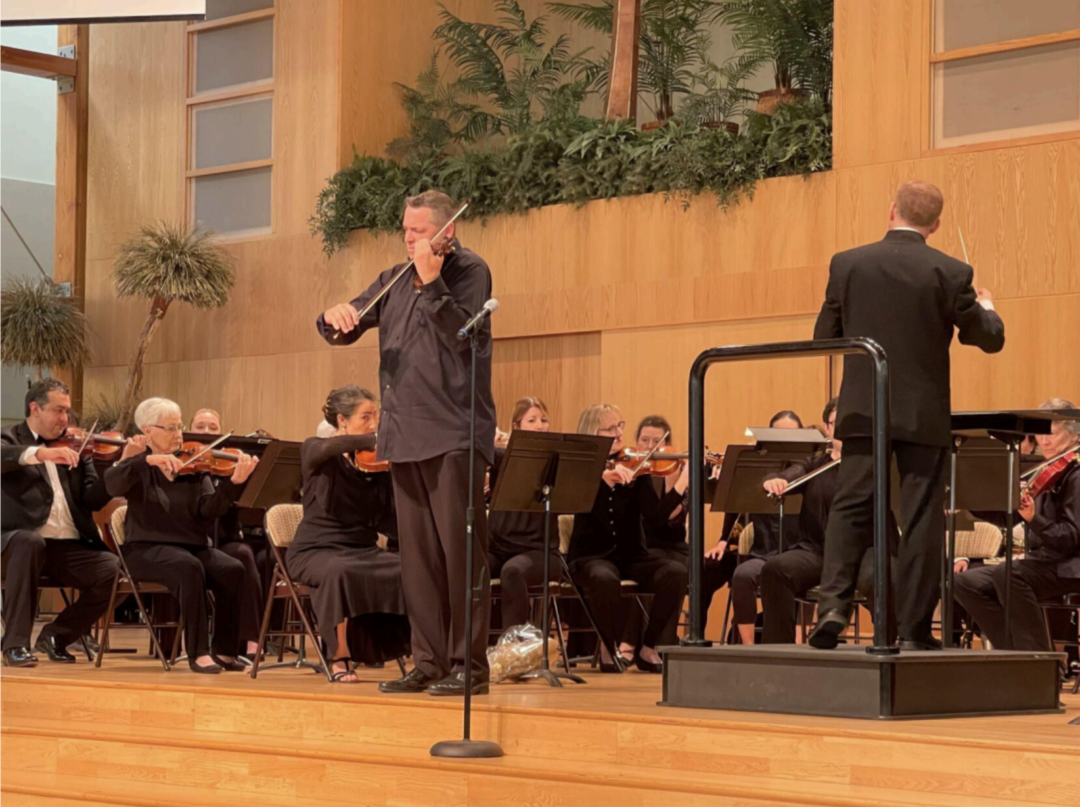
By Cathalena E. Burch. Originally published in the AZ Daily Star on October 10, 2022
Linus Lerner opened his 14th season as Southern Arizona Symphony
Orchestra music director last weekend with the work that helped land him the job.
We don’t recall his audition with the volunteer orchestra in 2007-08, but we’re pretty sure the orchestra he led in Tchaikovsky’s Symphony No 4 on Sunday, Oct. 9, at St. Andrew’s Presbyterian Church was far more polished than the ensemble that performed the piece with him after just a scant few days or weeks of working together back then.
After 14 years with Lerner, the musicians have truly become an extension of him. When they are on stage together, they are so in sync that it is hard to see where he ends and they begin.
When he revisited the Tchaikovsky on Sunday, his musicians needed little prodding
from the podium to bring out the lush, cinematic melody of the second movement
that swept in and took your breath away. Lerner needed only to nod toward the winds
to conjure the angelic notes from flutist Nancy Anderson before he dropped his
shoulder toward Concertmaster Erika Roush, who led the way for that deliciously
familiar phrase that pulsates like a heartbeat on soaring strings.
Lerner opened the concert with the fanciful overture to Rossini’s opera “The Barber of
Seville” before guest violinist Steven Moeckel took the stage for Tchaikovsky’s
complex and wonderful Violin Concerto in D major.
This was the first time Moeckel, the former Tucson Symphony Orchestra and Phoenix
Symphony concertmaster who is now teaching at Northern Arizona University, has
soloed with SASO during Lerner’s tenure. He performed with the orchestra one other
time, under Lerner’s predecessor Adam Boyles.
He and Lerner played off one another with the timing of musicians who were
intimately familiar with one another’s rhythms. Moeckel would get to the end of
aerobic solo run, his fingers dancing with precision and speed to keep up with
Tchaikovsky’s demanding whirlwind of note changes, and he would glance in Lerner’s
direction. Even when he had his back to Moeckel, Lerner responded to the violinist’s
cues.
Tchaikovsky’s Violin Concerto is arguably one of the most demanding of the
repertoire. Its challenges on the soloist are legendary, with rapid-fire note changes
that from the audience looks like a blur of fingers dancing on the fret to keep up. It
opens with the violin weeping and pleading before it joins the orchestra for a waltz
interrupted by frenzied outbursts from the soloist. When Moeckel drew his bow for
the the final note of the movement, Sunday’s audience burst into a standing ovation
and one woman near the stage said to her seat mate, “I think he can play.”
The second movement is dominated by the orchestra playing pizzicato and Moeckel
slowing the tempo slightly. That didn’t mean he got a break; he still carried most of
the action, which could explain why he took a deep breath before the finale and a
return to those dizzying chord changes.
Following another ovation, Moeckel returned to the stage to perform the first
movement of Bach’s solo sonata, which is included on his debut solo album “Sei
Solo: Looking Within.” The album, released last fall, was inspired by the loss of
performing live because of the pandemic.
SASO continues its season in November with “Mendelssohn, Haydn, Dvořák,”
featuring guest conductor Ahmed Elsaedi from Egypt and Italian cellist Francesco
Mariozzi. For details, visit sasomusic.org.
